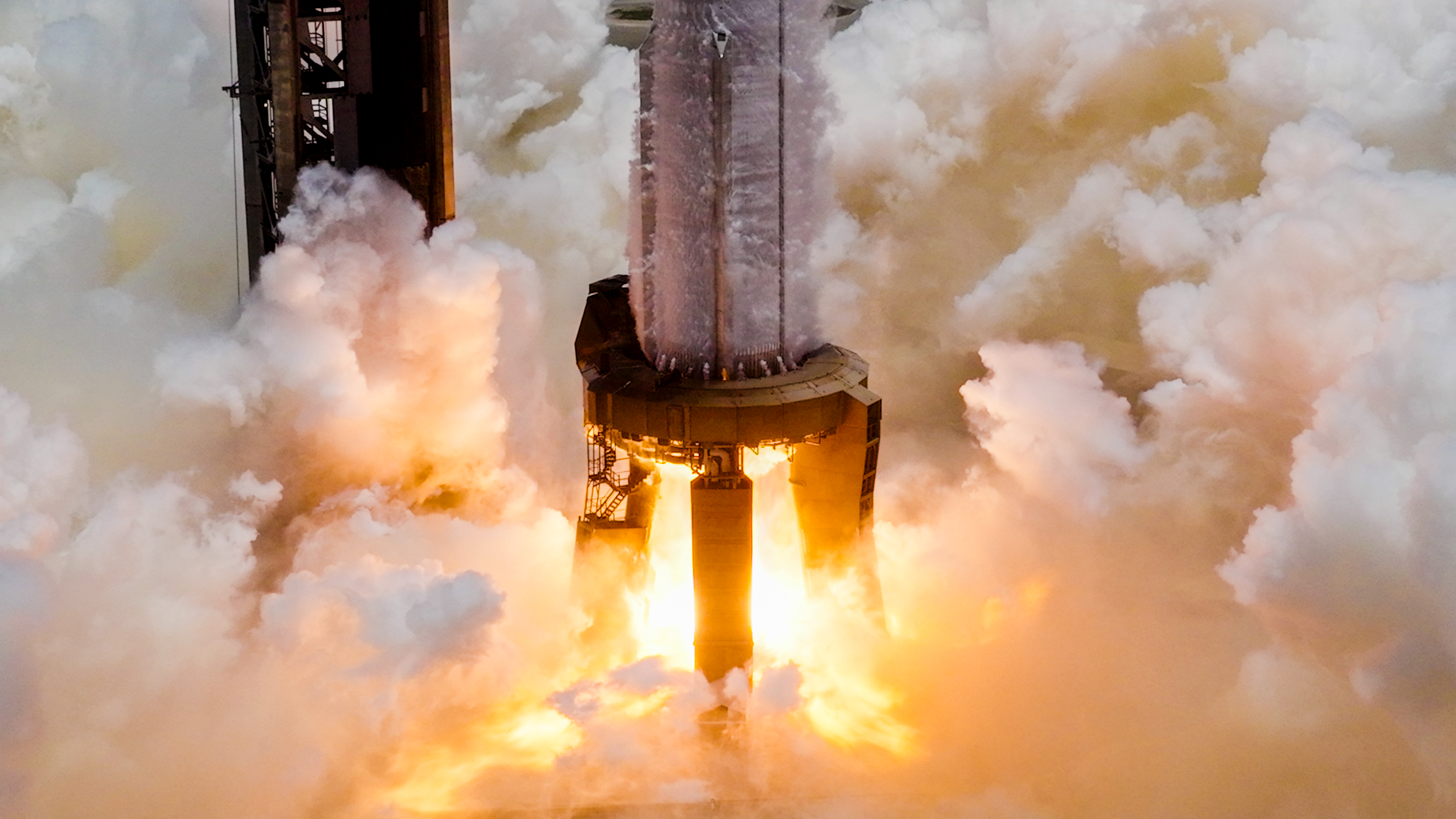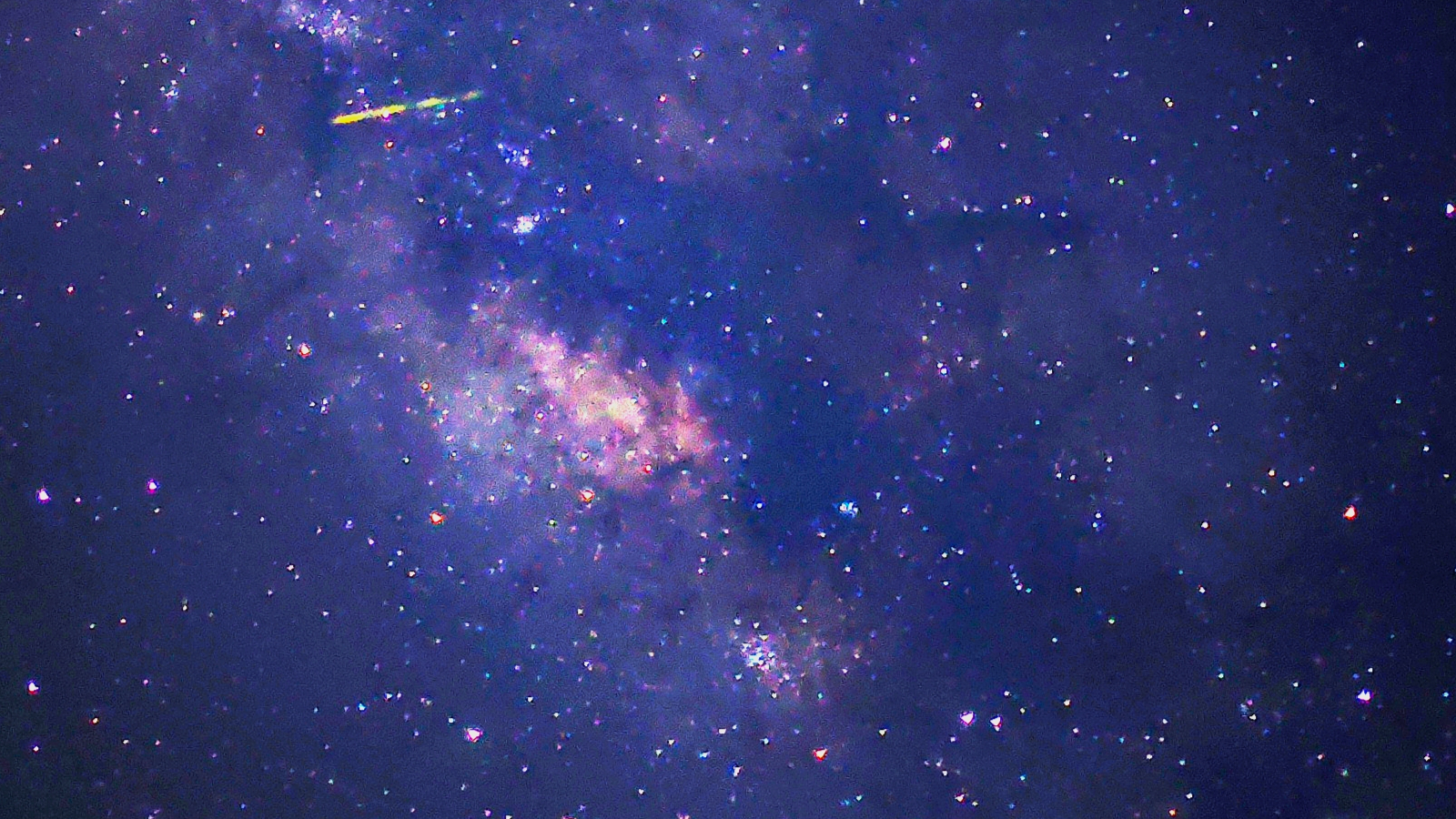SpaceX is already gearing up for the next flight of its Starship megarocket, just a week and a half after the most recent one left the ground.
The company performed a long-duration "static fire" test with Super Heavy, Starship's huge first-stage booster, at its Starbase site in South Texas on Friday (June 6).
All 33 of Super Heavy's Raptor engines lit up during the trial, SpaceX said in a Friday X post that shared a photo and two short videos of the action.

The test was part of the preparations for Starship's next launch, according to the X post. That flight will be the 10th to date of a fully stacked Starship — a Super Heavy topped with an upper stage known as Starship, or Ship for short.
Starship Flight 9 lifted off from Starbase just last week, on May 27. It was a landmark launch — the first ever that featured a used Super Heavy. That booster first flew on Flight 7 in January; on that mission, it came back to Starbase for a dramatic catch by the launch tower's "chopstick" arms.
There was no such attempt on Flight 9; SpaceX performed a variety of experiments with Super Heavy on May 27 and decided to bring it down for a hard splashdown in the Gulf of Mexico for safety's sake.
The booster didn't quite make it, however, breaking apart about 6.5 minutes after launch, just after beginning its landing burn.
Breaking space news, the latest updates on rocket launches, skywatching events and more!
Ship didn't stay together on Flight 9, either. The upper stage reached space on a suborbital trajectory but began tumbling about 30 minutes after liftoff.
As a result, the vehicle couldn't come in for a soft splashdown off the coast of Western Australia as planned. SpaceX lost contact with Ship about 46 minutes into flight; its pieces likely now rest on the Indian Ocean seafloor.
The U.S. Federal Aviation Administration is requiring an investigation into what happened on Flight 9. Flight 10 cannot lift off until that inquiry is concluded to the agency's satisfaction.
Join our Space Forums to keep talking space on the latest missions, night sky and more! And if you have a news tip, correction or comment, let us know at: community@space.com.

Michael Wall is a Senior Space Writer with Space.com and joined the team in 2010. He primarily covers exoplanets, spaceflight and military space, but has been known to dabble in the space art beat. His book about the search for alien life, "Out There," was published on Nov. 13, 2018. Before becoming a science writer, Michael worked as a herpetologist and wildlife biologist. He has a Ph.D. in evolutionary biology from the University of Sydney, Australia, a bachelor's degree from the University of Arizona, and a graduate certificate in science writing from the University of California, Santa Cruz. To find out what his latest project is, you can follow Michael on Twitter.
You must confirm your public display name before commenting
Please logout and then login again, you will then be prompted to enter your display name.
